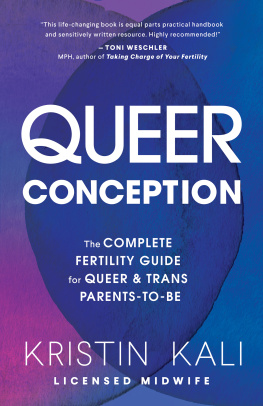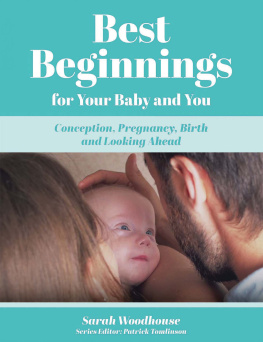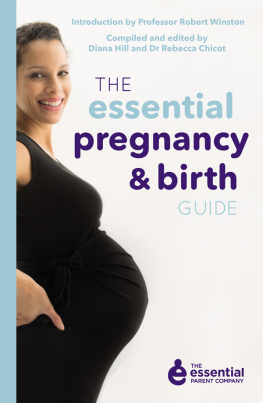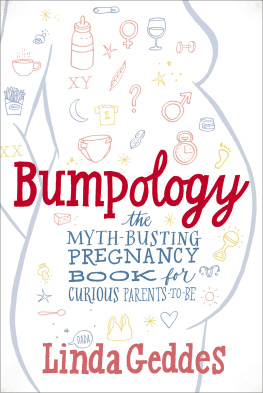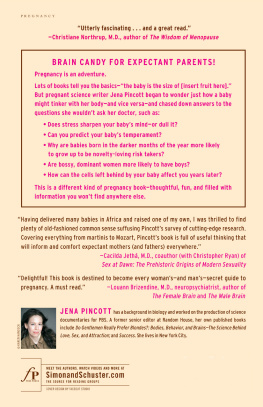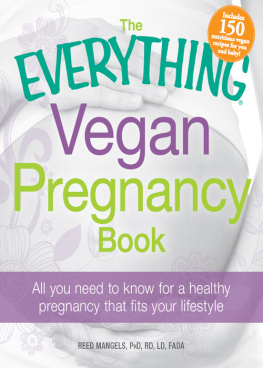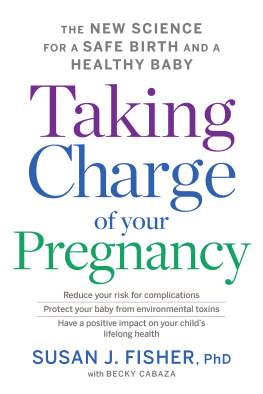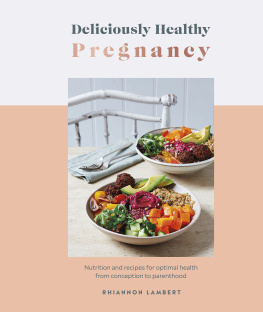Contents
Guide
Praise for The Secret Science of Baby
What has physics got to do with conception, birth, and infancy? Plenty indeed, as Michael Banks explainsand if you decide to find out, I guarantee you wont be disappointed. The Secret Science of Baby is fun and fascinating, but it is more than that: it deepens our sense of awe and admiration at the ingenuity life has put into the process of propagating itself.
Philip Ball, author of How to Grow a Human: Adventures in Who We Are and How We Are Made
If youre a parent whos ever pondered conception, childbirth, or baby behavior, and wondered, How the heck does this even happen?, The Secret Science of Baby is for you. Prepare to be wowedand maybe a little grossed out, too.
Melinda Wenner Moyer, author of How to Raise Kids Who Arent Assholes: Science-Based Strategies for Better Parentingfrom Tots to Teens
From conception to birth and beyond, The Secret Science of Baby walks the reader through the wide and fascinating range of science involved in the production of a new human, and in the process makes this most quintessentially miraculous of life events seem even more amazing.
Chad Orzel, author of How to Teach Quantum Physics to Your Dog
Fascinating. Terrifying. Ill never look at human reproduction the same way again.
James Breakwell, comedy writer, creator of @XplodingUnicorn on Twitter, and author of Bare Minimum Parenting
Everything you wanted to know about the science of your bouncing, burping bundle of joy but were just too plain exhausted to ask. Michael Banks explores the fascinating and, frankly, downright weird physics, chemistry, and biology of making a human. The Secret Science of Baby covers everything from the pregnancy-detecting capabilities of frogsI kid you notto the fluid dynamics of diapers, seamlessly blending wry historical vignette with state-of-the-art research and captivating explanations of the scientific principles at play. Just like your teething little one at 3:00 am, The Secret Science of Baby is unputdownable.
Philip Moriarty, author of When the Uncertainty Principle Goes to Eleven: Or How to Explain Physics with Heavy Metal
The Secret Science of Baby offers a fascinating look at some of the scientific triumphs (and mishaps) of creating small humans. This book is perfect for anyone interested in learning about the science of early parenthood or fun trivia facts like what was used as a common feeding bottle during the Middle Ages.
Julie Vick, author of Babies Dont Make Small Talk (So Why Should I?): The Introverts Guide to Surviving Parenthood
This was a hilarious, informative, and entirely impractical guide to babies. I loved it.
Chris Ferrie, author of Quantum Physics for Babies


The Secret Science of Baby copyright 2022 by Michael Banks
All rights reserved. No part of this book may be used or reproduced in any manner whatsoever without written permission of the publisher, except in the case of brief quotations embodied in critical articles or reviews.

BenBella Books, Inc.
10440 N. Central Expressway
Suite 800
Dallas, TX 75231
benbellabooks.com
Send feedback to
BenBella is a federally registered trademark.
First E-Book Edition: 2022
Library of Congress Control Number: 2022014668
ISBN 9781637741467 (trade paperback)
ISBN 9781637741474 (electronic)
Editing by Jodi Frank and Alexa Stevenson
Copyediting by Michael Fedison
Proofreading by Leah Baxter and Jenny Rosen
Indexing by Debra Bowman
Text design and composition by PerfecType, Nashville, TN
Illustrations by Michael Banks
Cover design by Faceout Studio, Amanda Hudson
Cover image Shutterstock / Bert Flint (bear), M_Guneshi (space mobile), and Nadiinko (atom)
Special discounts for bulk sales are available. Please contact .
For Claire, Henry, and Elliott
CONTENTS
I f you have picked up this book, there is a good chance you either have children or have one on the way. Or, perhaps you may just be curious about how physics can possibly have anything to do with babies. If you are expecting, then congratulations! Your life will now, or soon, change foreverinterrupted nights; never going out in the evening; going to the restroom with an audience; pushing your screaming child in the buggy in the rain desperate for him or her to sleep. Again, many congratulations! After blood, sweat, and plenty of tears, childbirth is a moment of pure joy and something you will most probably only experience once or twice in your life. It is a major milestone, especially for grandparents who have been waiting years, if not decades, for the moment they can finally put that homemade knitted hat on their grandchild for the first time.
Pregnancy is also a time when parents are bombarded with information: what to expect, what not to do, and how that little embryo is developing week-to-week (including the bizarre use of different fruits as a unit of length). If you are after any of that, then, alas, you may be better served elsewhere. This book will not tell you what to eat during pregnancy or describe the techniques to get your baby to sleep through the night. Nor will it advise you how to raise a perfect violin-playing, Mandarin-speaking toddler. Research into the latest child psychology is absent here, having been well trodden in countless other books.
Instead, The Secret Science of Baby will explain, from a physics perspective, how or why things happen: For example, how can cells in the uterus contract in unison to expel a 4-kilogram (8-plus-pound) baby? What is it about an infants cry that solicits parents attention so effectively? How does a newborn effortlessly extract milk from the breast? The book will also shine a light on the latest science behind many aspects of conception, pregnancy, and baby development while not shying away from highlighting the limitations of such work and what remains to be discovered. The book will detail how such research has generated answers, new insights, and, yes, more questions.
The Secret Science of Baby also highlights how technological development over many decades has reflected the true spirit of curiosity-driven physics research. Well explore techniques developed by physicists, engineers, and mathematicians to get a better understanding of what the human body, particularly in baby form, can do.
When people think about physics, the first thing that likely comes to mind is the universe, quantum mechanics, or the hunt for fundamental particles of nature. Yet physics is a subject that touches on so many more different areas, and many of the tools that physicists have builtbe it machines like magnetic resonance imaging (MRI) or theoretical modelshave often found uses beyond those directly intended. Albert Einsteins theory of general relativity in the early twentieth century, for example, paved the way decades later for global positioning systems that allow us to know where we are anywhere on the globe with a precision of a few meters (or a few yards), while the advent of quantum mechanics in the 1920s promises unbreakable communication as well as computational ability far more powerful than their classical counterparts. And, yes, even when it comes to conception, pregnancy, and babies, there are many insights that physics can provide, from examining how infants draw their first breath and understanding how gases diffuse through the placenta to touching upon the science of how infants acquire language.
Next page


